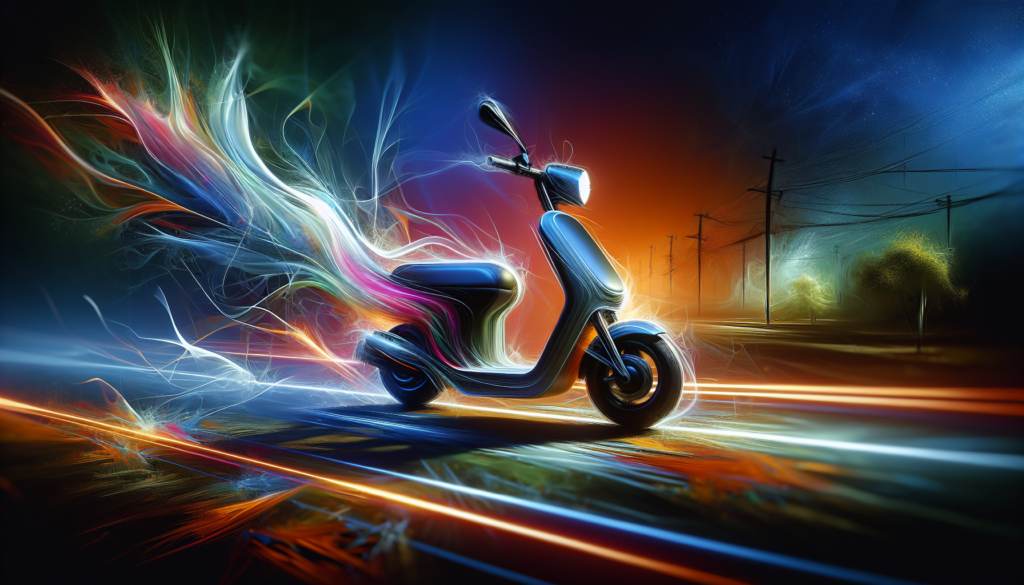
Electric scooters have taken the world by storm, offering an eco-friendly and convenient mode of transportation. But, have you ever wondered why some electric scooters (EV scooters) cost an arm and a leg? In this article, we’ll delve into the world of manufacturing, research, and development to uncover the surprising factors that drive up the price tag. Buckle up, as we take a thrilling ride through the EV scooter industry!
The High Cost of Research and Development
When it comes to EV scooters, R&D is a crucial step in the manufacturing process. Companies invest heavily in designing, testing, and refining their products to ensure they meet the highest standards of quality and performance. This extensive research phase requires significant resources, including skilled engineers, software developers, and testing facilities. The cost of developing a single EV scooter model can range from $500,000 to over $1 million, depending on the complexity of the design and the number of prototypes created.
The Impact of Manufacturing Costs
Manufacturing costs play a significant role in determining the final price of an EV scooter. The production process involves various stages, including raw material sourcing, assembly, testing, and quality control. Companies must also factor in labor costs, overhead expenses, and equipment maintenance. Additionally, manufacturing facilities require significant investments in infrastructure, technology, and personnel training. These costs can add up quickly, contributing to the overall price of the EV scooter.
The Role of Materials and Component Costs
EV scooters rely on a range of materials and components, such as lithium-ion batteries, electric motors, and advanced electronics. The cost of these components can vary greatly depending on factors like quality, durability, and sourcing. For instance, high-performance batteries may require significant investments in research and development, while rare earth metals used in motor production can be costly to obtain. These material costs are often passed down to the consumer.
Regulatory Compliance and Certification
As the EV scooter industry grows, regulatory bodies are introducing stricter guidelines for product safety, environmental impact, and performance. Companies must comply with these regulations by investing in testing facilities, certification processes, and training programs. This compliance requires significant resources, adding to the overall cost of the EV scooter.
Marketing and Distribution Strategies
To reach a wider audience and establish market presence, companies must invest in marketing campaigns, brand awareness initiatives, and distribution networks. These efforts require substantial resources, including advertising budgets, event sponsorships, and logistics support. The cost of these activities is often factored into the final price of the EV scooter.
Profit Margins and Pricing Strategies
Companies need to generate profits to sustain their operations, invest in R&D, and drive growth. EV scooter manufacturers use various pricing strategies to balance costs with revenue goals. This may involve setting premium prices for high-end models or offering budget-friendly options to attract a broader customer base.
The Bottom Line: Why EV Scooters Cost an Arm and a Leg
In conclusion, the cost of an EV scooter is influenced by a range of factors, including R&D expenses, manufacturing costs, material and component costs, regulatory compliance, marketing and distribution strategies, and profit margins. As the industry continues to evolve, consumers can expect prices to fluctuate based on these variables. At Eko Life Malaysia, we’re committed to providing high-quality EV scooters at affordable prices while ensuring our customers receive exceptional service. Contact us today to learn more about our range of products and services.

Finally, someone is speaking the truth. I was starting to think it’s just me who feels overcharged for these EV scooters.
Thank you, Khairiyah, for sharing your thoughts! At Eko Life Malaysia, we completely understand the frustration of high EV scooter prices. Our mission is to bridge the gap by offering high-quality e-bikes and e-scooters at affordable prices, while prioritizing exceptional service and community building. If you’re looking for a more affordable option, I’d be happy to guide you through our range of products. Feel free to reach out to us via [email protected] or +60 3-7890 3042 for more information.
Great article. It’s good to know that companies like Eko Life Malaysia are working on making these electric scooters more affordable.
Thank you for reading our article, Sharifan Abang! We’re committed to providing high-quality electric scooters at affordable prices without compromising on service. If you have any further questions or concerns, please don’t hesitate to reach out to us at [email protected] or call us at +60 3-7890 3042. We’d be happy to help!
But what about competition? Doesn’t the high price also protect smaller manufacturers from coming in and losing money? An interesting thought to consider.
That’s an astute observation, Razmy! You’re right that high prices can deter new entrants in the market. However, at Eko Life Malaysia, we aim to balance pricing with affordability, which allows more customers to access our high-quality products and services. While maintaining a fair market price, we also continuously explore opportunities to innovate and optimize our manufacturing processes to reduce costs without compromising on quality. I’d be happy to discuss this further with you and explore potential collaborations!